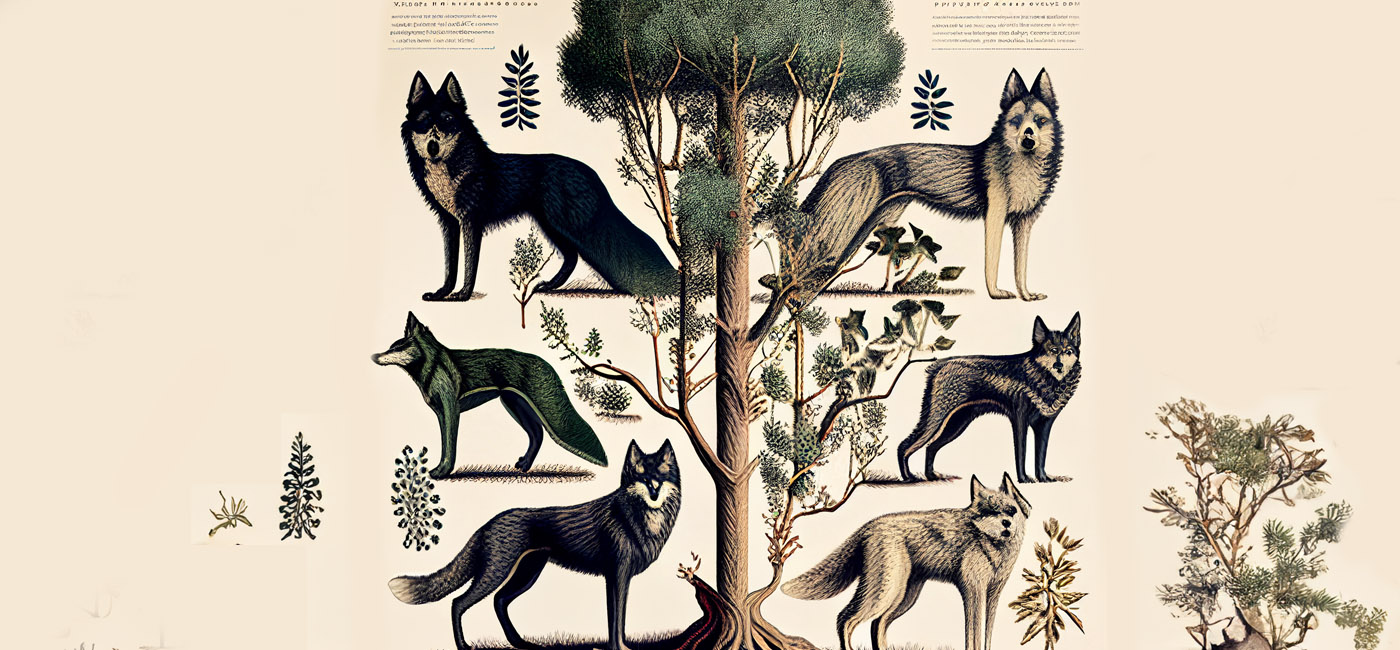
Wolves are one of the most fascinating creatures in the animal kingdom. They are highly intelligent, fiercely loyal, and have a complex social structure that is unmatched by many other species. Wolves have also been around for a very long time, with fossil records indicating that they have been roaming the earth for over two million years. In this article, we will delve into the fascinating history of wolf evolution and explore how these majestic animals came to be.
Origins of the Wolf
The origins of the wolf can be traced back to the Canidae family, which includes dogs, foxes, and coyotes. The earliest known ancestor of the wolf is a small, fox-like creature known as Hesperocyon. This animal lived in North America around 40 million years ago and is believed to be the ancestor of all modern canids, including wolves.
Over time, Hesperocyon evolved into a number of different species, including Tomarctus, which lived around 10 million years ago. Tomarctus was a larger animal than its ancestors, with a skull that resembled that of a modern-day wolf. However, it was not until around two million years ago that the first true wolf species, known as Canis lupus, appeared.
The Evolution of the Wolf
The evolution of the wolf is a complex and fascinating process that took place over millions of years. Wolves are believed to have evolved in response to a number of environmental factors, including changes in climate, prey availability, and competition from other predators.
One of the key factors in wolf evolution was the emergence of large herbivores such as bison, elk, and moose. These animals provided an abundant source of food for wolves, and their presence allowed the wolf to develop larger bodies and more powerful jaws.
As wolves began to adapt to their new environment, they also developed a more complex social structure. Wolves are highly social animals, living in packs that can consist of up to 20 individuals. Within the pack, there is a strict hierarchy, with dominant individuals taking the lead in hunting and other activities.
The development of this complex social structure was essential for the survival of the wolf. By hunting in packs, wolves were able to take down larger prey and defend themselves against other predators. The pack also provided a sense of community and allowed wolves to work together to overcome challenges.
Adaptations of the Wolf
Over time, wolves developed a number of adaptations that helped them to survive in their environment. These adaptations included:
- Thick Fur: Wolves have a thick coat of fur that helps to keep them warm in cold weather. Their fur is also water-resistant, which allows them to swim across rivers and streams.
- Strong Jaws: Wolves have powerful jaws that are capable of exerting a tremendous amount of force. This allows them to take down large prey and defend themselves against other predators.
- Sharp Teeth: Wolves have sharp teeth that are designed for tearing flesh. Their teeth are also able to crush bones, which allows them to access the nutrient-rich marrow inside.
- Keen Senses: Wolves have excellent senses of hearing, smell, and sight. This allows them to locate prey from great distances and detect potential threats.
- Endurance: Wolves are able to run for long distances without getting tired. This allows them to chase down prey and cover large areas of territory.
Conclusion
The evolution of the wolf is a fascinating and complex process that took place over millions of years. From their humble beginnings as small, fox-like creatures, wolves have evolved into one of the most successful predators in the animal kingdom. Their adaptations, including their thick fur, strong jaws, sharp teeth, keen senses, and endurance, have allowed them to survive in a wide variety of environments and take down prey much larger than themselves. Today, wolves face new challenges as they struggle to survive in a rapidly changing world. Habitat loss, hunting, and other human activities have led to declines in wolf populations in many parts of the world. However, efforts are underway to protect and conserve these magnificent animals, with conservation organisations working to establish protected areas and promote responsible management practices.
In addition to their ecological importance, wolves have also played a significant role in human culture and mythology. Throughout history, wolves have been revered as symbols of strength, intelligence, and loyalty. They have been featured in countless stories, poems, and works of art, and continue to capture the imagination of people around the world.
In conclusion, the evolution of the wolf is a testament to the power of adaptation and the importance of social structure in the animal kingdom. As we continue to study and learn about these incredible animals, we can gain a greater appreciation for the diversity and complexity of the natural world, and work to ensure that wolves and other species continue to thrive for generations to come.